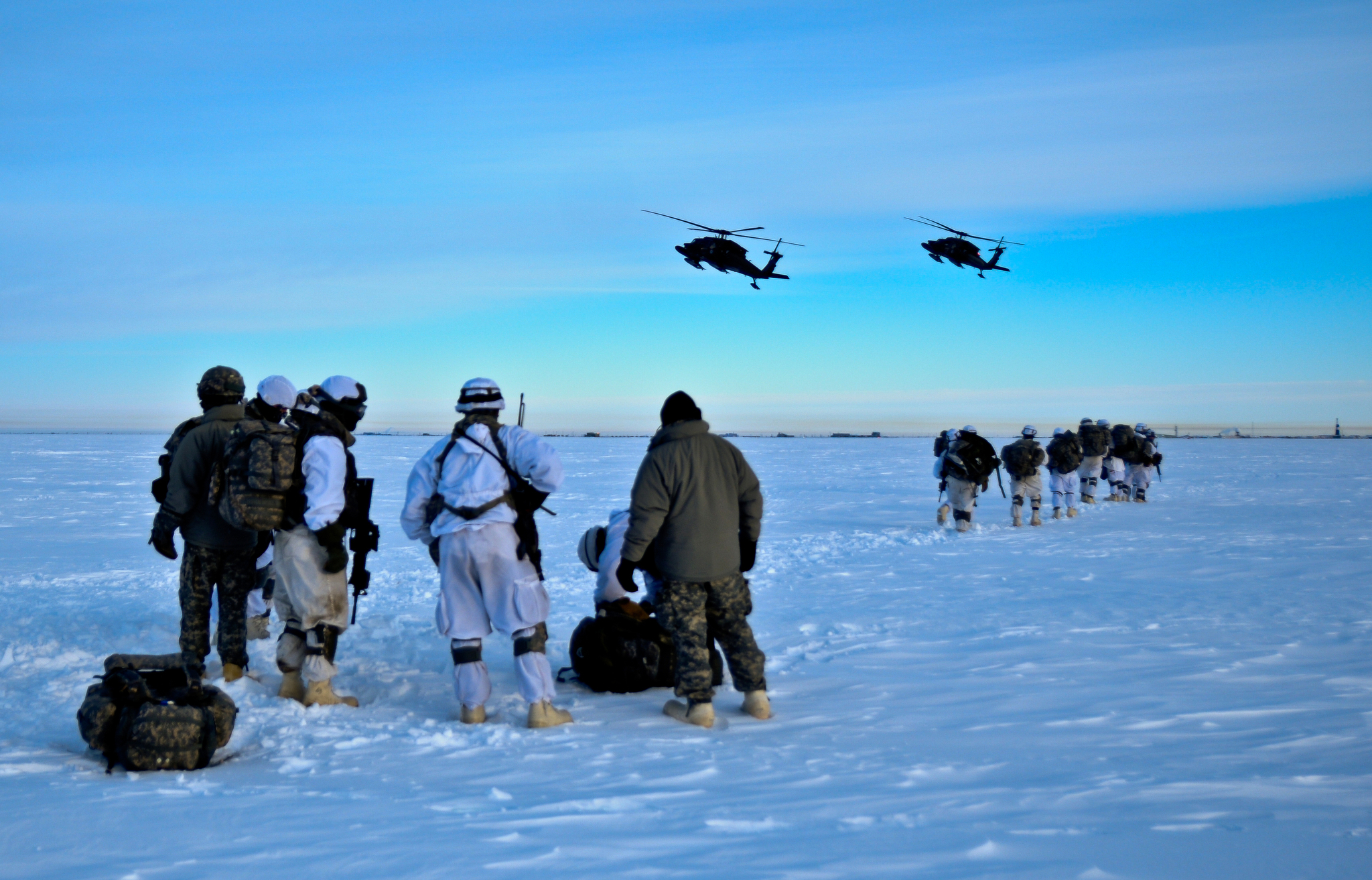How the U.S. National Guard in cold-weather states is driving U.S. Arctic preparedness
From security to search-and-rescue, several states in the U.S. National Guard are partnering to plan for an increased Arctic presence.

While the U.S. military has lagged behind other nations in developing its Arctic capabilities, there’s one part of the military where enthusiasm for the region runs high.
Under the umbrella of the the National Guard Arctic Interest Council, a group of Guard units from 18 northern and cold-weather states, ranging from Alaska to Maine, are collaborating on a range of possible cold-weather responses, from security concerns to search-and-rescue operations.
“The time is ripe — perhaps overripe — for our nation to have a coherent and overarching well-defined Arctic strategy,” said Major General Laurie Hummel, adjutant general of Alaska’s National Guard.
Hummel spoke at an event last month at the Woodrow Wilson Center in Washington, D.C., unveiling the council’s priorities.
“Look, nobody wants to think about the militarization of the Arctic,” she said. “But the fact is, there is no treaty. And militarization of ungoverned space can be seen as inevitable if we don’t put attention to it.”
She added that a wise defense strategy is “paramount” for addressing developing concerns in the Arctic.
“We have at least two peer or near-peer competitors who are assertively developing cold-weather Arctic capabilities,” she said, “while our Arctic capabilities and defense have been stagnant or, arguably, have atrophied.”
Russia, she said, is “expanding assertively and quickly.” They have more than 40 heavy icebreakers, 12 new airfields above the Arctic Circle, 16 deep-water ports, 20 or so air-defense radar sites, tactical and long-range artillery, and dedicated cold-weather training centers. In addition, the nation is actively deploying “valuable and scarce” combat brigades, paratroop units, electronic warfare units, and counter-terrorism forces.
“All of this is being tied together, coherently, with the creation of the new Arctic Strategic Command,” she said.
China, while their activities in the Arctic have been “lower-key,” has nevertheless become an active participant in Arctic affairs.
China wants “to influence the discussions and decisions on how the Arctic should be governed,” Hummel said. “They are definitely an aspirational force in the Arctic.”
At a glance, the various state National Guards might seem an unusual player in the region, especially considering the fact that 17 of the 18 states in the council are not located in the Arctic. But the agency’s focus on preparedness is present even in their slogan: “Always ready, always there.” The alliance of states aims to address “giant gaps” in the U.S. military’s cold-weather abilities, Hummel said.
“We need to be able to sustain forces in extreme cold weather,” she said. “We are no longer properly equipped — we don’t even have the necessary clothing as individuals to operate in extreme cold weather for extended periods of time without significant risk of injury.”
One field exercise, Arctic Eagle, allowed the Guard and other partners to test equipment and rehearse scenarios in cold-weather situations, evaluating their response to natural disasters and security threats.
Brigadier General Lowell Kruse, assistant adjutant general in Minnesota’s National Guard, said that many branches of the military had allowed cold-weather capabilities to atrophy. The National Guard, with its missions to mobilize for both defense and national emergencies, can help exercise these little-used muscles.
Kruse also highlighted the importance of the National Guard’s relationships with other countries. Each state partners with a different nation: Slovenia, Denmark, Canada, Mongolia, and so on.
“What Minnesota or Colorado brings to the table is relationships,” he said. Minnesota’s National Guard has had a partnership with Norway for nearly half a century, keeping them in contact with government officials of all stripes in Norway. These relationships help the Guard prepare for different environments and challenges, and they also keep the lines of international dialogue open.
Hummel was careful to note what the National Guard Arctic Interest Council is not—they’re not spokespeople for the military, she said, and they’re not experts on the Arctic. “But we’re students of the Arctic.”
The council is working with NORAD, the North American Aerospace Defense Command that partners with Canadian forces, in addition to their existing collaborations with National Guard offices across the U.S. and several branches of the military. They’re working with policymakers to create a cohesive Arctic strategy.
“We have to be more agile,” Hummel said. “We have to be more proactive.”
“Ungoverned spaces will eventually be governed,” Brigadier General Shawn O’Brien said.
What the council can do, he added, is help provide a presence and a preparedness plan.